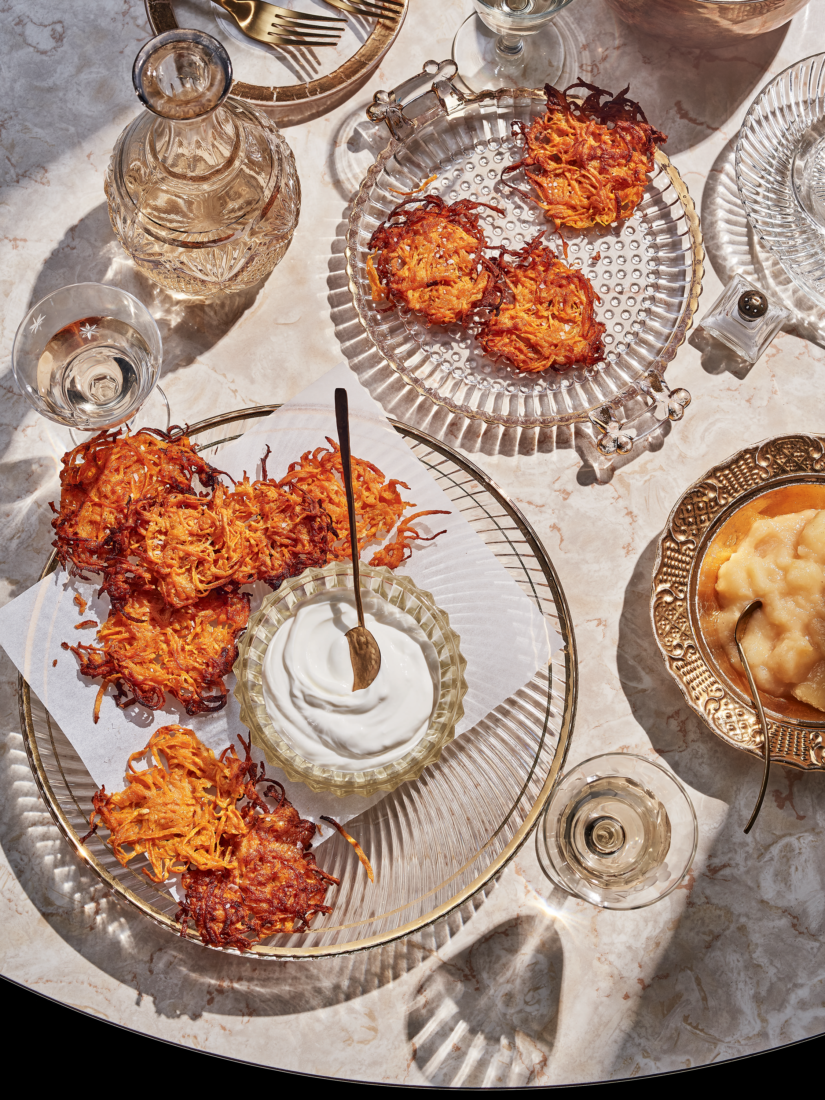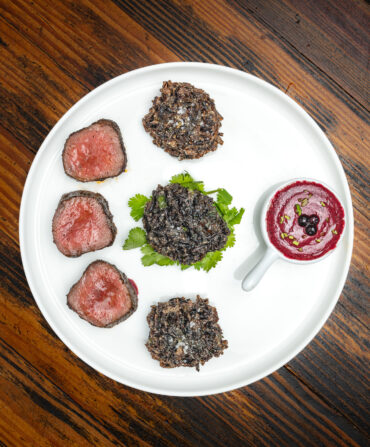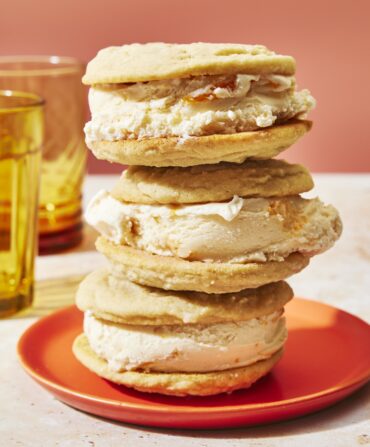April McGreger, who for eleven years ran the beloved pickle and preserve business Farmer’s Daughter outside of Chapel Hill, North Carolina, is in a mixed marriage. She was raised a Christian in Mississippi. Her husband, the illustrator Phil Blank, grew up in a Jewish family in Pennsylvania.
Anyone who has been in one of those relationships knows that cooking for two sets of holidays can bring on what McGreger calls “celebratory cooking overload.” The cultural crush can be even more difficult when a Southern cook who made her name with hyperlocal products such as Bradford watermelon rind pickles and scuppernong chutney wades into hundreds of years of Eastern European culinary tradition.
All of this helps explain why McGreger will spend Hanukkah frying dozens of sweet potato latkes for her husband’s extended family. In 2018, she closed up shop and moved to northwest Philadelphia with Blank and their then seven-year-old son, Mo. The move came about the way many of these things do. Blank had retired from the reference librarian business he started. McGreger was tired of her own business, which was complicated and labor-intensive and “didn’t scale well,” she says. They hated leaving the Chapel Hill area, where they had met in front of a left-leaning bookstore twenty years earlier, but there were grandparents and siblings and cousins to consider. Friends had moved north to Philly, too, including the violin player in her husband’s klezmer band.
The move has brought other pleasures, among them the opportunity to perfect her latkes. She starts by shredding sweet potatoes and onions in a food processor. Her favorite is a starchy Japanese variety that is white on the inside and purple on the outside, but any good orange Southern sweet potato will do. She salts the grated tubers and lets them sit for about a half hour so the shreds release moisture. Then she whirls them dry in a salad spinner and saves the water in a bowl. When the starch from the potatoes sinks to the bottom, she drains the water, scoops out the starch, and mixes it back into the potatoes, along with a generous amount of beaten egg. Only a small amount of flour, if any, is needed to finish the job.
“It solves many of the latke problems,” McGreger says of her technique. “Water is the biggest problem, which is why people add a lot of flour, and then that changes the texture.”
She fries them until their lacy edges are crisp. McGreger is ecumenical about the oil. If she has some duck fat or chicken fat, she’ll use it. Peanut or avocado oils are good options, too, but canola will do fine. “Just no olive oil,” she says. (Too much flavor.)
She hopes sweet potato latkes will help her son stay close to his Southern roots. His mother, after all, grew up on a sweet potato farm in Vardaman, Mississippi, which calls itself the Sweet Potato Capital of the World.
“I’m lucky because he loves okra and sweet potatoes,” she says. “He even asked for sweet potato pie for his birthday.”









